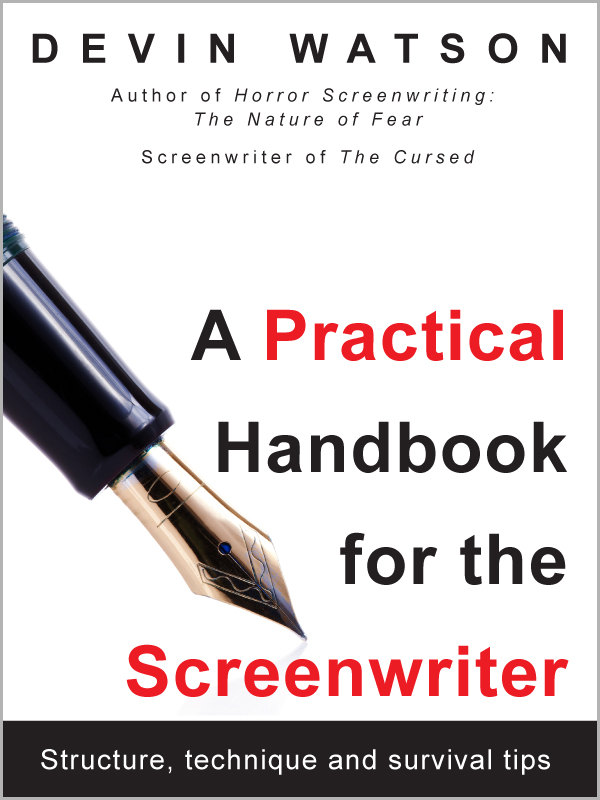Given the amount of traffic my other post about investing in movies and trying to clear the air about the reality of independent filmmaking these days, I realized there were quite a number of salient points which were not included in the original. It got picked up by another high-traffic blog and has received a lot of traffic because of it. Looking at some of the search results that lead to that post on Google showed that it is #8 in most cases.
Included here is a followup to that post with some in-depth information for potential investors of independent films, laying it all out as to why things aren’t what they think they are these days versus five to eight years ago and what each side of the table should know about the other. Other independent filmmakers should read this over too, especially if you are thinking about getting into this business.
This post is divided into two parts, but both an investor and a filmmaker would do well to look over both sides to better understand each part.
What An Investor Should Know
So you’ve decided to invest in film. Great! You probably picked up a few books or listened to some anecdotes from a few of your other entrepreneur associates. Guess what? That book you read has out-of-date information most likely.
The field of filmmaking, especially for independents, has changed radically over the last few years. That’s not to say there’s a few nuggets of wisdom in there, but this business has changed and you should not go in with preconceived notions of how it’s done and expect it to be 100% just like you read in the book.
If you’ve invested in other industries but not films, which seems to be more of the case these days, there’s a few things about this business which I had outlined in my previous post but didn’t go into much depth about. If anything, it looked more like a list of turn-offs for investors.
Here’s some reasonable and realistic expectations going into film investment which is different from many other businesses. Realize also that the values indicated are broad in nature but based on time-tested and well-known experiences not just from myself, but from just about every other filmmaker out there.
The Realistic Time Scale Assumption
Making movies is a long-term investment strategy, not a short-term, tactical one. Do not expect to see returns within the first quarter of closing escrow. That first quarter is going to be spent on pre-production, principal photography, and post. Post-production may even carry a month or two into the next quarter as well, depending on how complex the film is and how much was shot.
After post, there may be a period of about 2 months where it is being shopped around and screened to various distributors. A lot of this stage can be condensed by gathering a bunch of them together for a screening. Once a distributor agrees to put the film out, there’s still the matter of getting it ready for its final launch not only domestically in your country, but to other countries as well. That may take another month there.
Distribution still requires pounding the pavement, going to festivals or shows such as MipTV or other film markets to get buy-in. You’re looking at about another quarter here before all of the ink is dry for all of the different sub-distributors in different countries that have bought in.
All told, go in with a reasonable expectation of eighteen months before you see the first returns come in. The one thing that I failed to mention in my other post, however, was that once it starts coming in, it keeps coming in. Typically you see the biggest returns within the first five (5) years before it becomes a steady but low drizzle. But it’s still there and will continue to come in.
If you consider this a long-term investment, consider also the idea that it should not be done in a vacuum as a one-off. It’s one thing to make one film. It’s quite another to go in with the mindset of doing three or four in a 2-year span, stair-stepping each one so that as you go into post-production on film #1, you’re already ramping up pre-production on film #2, and so on. This results in a set of returns that aggregates over an even longer period.
The Truth About Distribution
Notice that, in this scenario, we’re talking about a hypothetical film which has no distributor going in prior to filming. This is very realistic and understood these days. Unless you are an A-list director or producer, a tiny independent film is not going to get distribution locked in prior to a single frame being shot on a product that does not exist.
This is not a risk at all, by any means. When they (the distributors) have seen that you have shot a film, they’ll be more than happy to view a screening. It’s something tangible that they can see and know right away if it’s viable as a product for them to sell. They’re hungry for product, not ideas.
Sure, there are some who can manage to finagle an output deal with somebody before their project is filmed. However, I would counter also that the distributor making such a deal may not be totally informed or is looking to cash in for a quick buck.
Having a product in hand gives you leverage over a distributor. If you come to them with only a pitch or a script, you are dealing from a position of weakness whether you know it or not. And there are more than a few out there which are unscrupulous and will take advantage of the situation with unreasonable costs, such as charging $40,000 for a single movie poster to get printed. On the books, it looks like they’re breaking the bank and will suck up as much as they can before you, the investor, see a single dime. Caveat emptor. Sit down with the filmmaker and do some due diligence. Communication and honesty is absolutely paramount.
Immediate Tax Incentives
Depending on where the project is being shot, each state has a set of tax incentives for the project. Many states, such as Georgia, offer tremendously great ones including a Use Tax Exemption on materials that can save 8% right off the bat during production. For a low-budget project (under $1 million for the sake of this conversation), this can mean the difference between having finishing funds or not starting at all.
New Mexico also offers very nice matching funds for your budget, with a minimum of $2 million coming in. That means you can get a $4 million budget for half the price. Of course that means coming in with $2 million, as opposed to a lower budget project so it’s a slightly higher bar to reach for.
There is one state I refuse to film in: California. I wouldn’t film a single movie there if I could help it. It’s prohibitively expensive on all fronts and the incentives just aren’t as good as any other state out there.
I’m not going to go over every single state in the U.S. concerning who’s better and who’s worse, but I will say this: don’t film in a state that offers little, if any. Some will put it on the back-end as a rebate, others offer it up front as a tax credit. The ones that offer tax credits are more desirable for completion of a production, and it pays to do your own homework.
Ask the producer or filmmaker where they plan to shoot their project, if it isn’t already included in the business plan. If they haven’t decided yet, don’t consider it a dealbreaker. Work with them on it if you are truly interested in what the project has to offer. I make sure to have a specific state and set of locations in mind and include them in every single business plan I write. Coming into a potential deal with an investor knowing all of these things in advance will not only make you look good, but know what you’re talking about.
Tax incentives don’t extend just to the production of the film itself. While those can help remunerate costs quickly and maybe give you, the investor, a little more cash up front, remember that this is a long-term investment. There are other tax write-offs that can be done with a good accountant for the cost of the film during the year that the film is in production and escrow is closed also.
Casting
If you’re funding an independent film that has a budget range of under $1 million, do not expect the cast to be a bunch of A-list actors. Sure, you may have a project that attracts an actor based on the merits of its story, but their paychecks exceed the total budget of the film.
There are, and I know this from hard-earned experience, thousands of actors who are at this moment undiscovered but have a great deal of talent. Remember that Tom Cruise wasn’t always a huge box-office draw. He was hungry just like they were. Your potential film deal could be the one that launches a new star and if you left it on a good note, they’ll probably come back for more.
Filmmakers, Don’t Sell Yourselves Short
On the other side of the deal, filmmakers should be looking long and hard about who they deal with. You do have a choice, no matter how desperate things may seem. An investor may have the money and wants to come in and work, but if they are making unruly demands of your production without any benefit of knowledge of the business, you don’t have to work with them. Remember that you are the one with the deal.
That’s not to say you should be rigid and uncompromising with them. But if they’re making it a stipulation that their nephew has to have the lead role and they’ve never acted before in their entire lives, think carefully. Do you really need it that badly? Are they willing to negotiate on those stipulations? What standards are you going to compromise just to get your film made?
I’ve walked away from several deals in the last year because of an uncompromising investor who was being unrealistic. And I don’t regret it. Neither should you.
Due diligence pays off in time and pain saved later. You can bet dollars to cents that the investor is doing research on you, probably while you’re on the phone with them trying to figure out, “Who is this guy?” You should be asking exactly the same questions and doing the research.
I don’t make it a point to get involved in the personal politics of any investor. However, getting a good idea of how they operate will tell you volumes about how you’re going to be treated by them. If you have lunch and they don’t leave a tip or something below 5%, it might be an indicator that they could pull the rug out from you, the filmmaker, financially speaking later on and leave you high and dry with a lot of angry cast and crew.
What An Investor Wants To See
A producer has a lot on his shoulders just to get a production going. Besides getting an option for a script they think is viable as a commerical offering, they then have to essentially build a case for the script in the current film market and create a business that deals specifically with said project.
Here’s what most investors want to see up front. Make sure you have a strong Non-Disclosure Agreement signed prior to sending any of this information out:
- Business Plan
- Market and Demographic Research
- Coverage Report (optional)
- Synopsis
- Cast Attachment Letters
- Budget
- Script (optional)
Now, an investor should not need to see the script. An investor wants to see numbers more than anything. Projections, charts, previous films of the same budget range and genre that give a relatively good idea of how well your project will fare in that market. Those are what an investor wants to see more than anything else.
A producer has to give a case for this project and maybe even a whole slate of films that they are indeed worthwhile investments. If they want to see the script, show it to them after there’s been a deal in place. Scripts are not wholly indicative of the final product because an investor may not see it the way you, the filmmaker, do.
The business plan is where most of that comes into play. It is the most important out of every document that an investor will want to see. Business plans for movies differ somewhat from ones that are written for startups in that they revolve around only one thing: the production of a single film.
They can also be somewhat shorter than their startup counterparts. Generally speaking I put all of my market and demographic research, story synopsis, top-level budget, and production overview with key players into every business plan. This is not to give it padding but because it has everything to do with how a film will get made and in turn make money for the principals involved.
An investor may ask for any cast attachment letters. It’s helpful if you have already shopped the script around to have those in your back pocket. They aren’t necessary, but they go a long way to showing your own sincerity about getting your project done.
Where Is The Trust?
Many investors in the low-budget range who are either just testing the waters or are looking to jump in whole-hog are running a bit scared these days from the economy tanking. Here’s a proven fact: people want their entertainment no matter what. They will still eke out a few bucks to see a movie in the theater, rent one on Netflix or Blockbuster, or go buy it at their local video store or on Amazon. Movies are still going to sell, and they have been proven to sell even in tough economic times because people want their fix.
Trust is key to making a movie. There are risks on both sides. I would say that the risks are evenly shared, but you, the investor, have to understand how this works today as opposed to just a few years ago and not expect to take some risks, perhaps more than what you originally thought you would. You, the filmmaker, have to remain vigilant but flexible when it comes time to negotiate terms with the investor and make sure your ducks are in a row.
But above all, both sides have to trust the other. The investor has to trust that the filmmaker is going to turn out a good product to sell, and the filmmaker has to trust that the investor isn’t going to yank the rug out from underneath him or her. You’re forming a team that will be making a film, and hopefully many more in the future.
Make it a long-term relationship, just like the investment in a film really is.
What Do You Think?
Write in your own comments below and tell me (and the rest of the filmmaking community) what you think about the current state of independent film.
10 thoughts on “Investing in Movies – A Realistic Perspective”
Comments are closed.






what would you recommend I do. I have a good high school buddy whose managed to become friends with a big time independent movie producer. He’s visited his studio and watched him put together major films, also has been with him during meetings with major stars. My friend was extended an offer to begin to broker films for investors, but the thing is its all for real. I was always sharp in business and know some affluent people. I agreed to help him but where should we start??? Is this worth our time because we are very excited about the opportunity! I’ve ran checks on everything and it is for real..but we need direction
Jeffery – Check your e-mail. I sent a reply to you there rather than have something long in the comments.
I have a strong background in General Contract negotiating. It sounds like the approach here mirrors my recommendations from experience. If you truly want an “everybody wins” scenario vs. an “adversarial” approach opt for the Joint Venture Team mentality you describe. Otherwise, you may well end up with the Architect (Producer), Engineer (Crew), Contractor (Film Maker) (Director) and Owner(Investor) all on different sides of the same table angrily finger-pointing where the Owner-Investor always loses – – – something.
I am in a similar position to the one described by July’s poster, Jeffrey
Wesson, only my scenario is overseas. I am from a country in Latin America only recently discovering the potential of film investment; and have gained access to very wealthy as well as politically connected individuals all fascinated with the prospect of film production but with minimal knowledge of the film business model. These people are not only capable of raising substantial amounts of money, but also of influencing legislation with a few well-placed phone calls. The problem is that they don’t quite understand the business model and how ROI works in the film business. I find myself having to teach before I can persuade; and teaching the entire scope of the film industry from investment to distribution is rather daunting. What do you suggest?
If they are investors, then they will most likely want to see numbers first. They will want to know exactly why it takes 18 months at a minimum before returns come in. Start with the 5 phases of film production: Development, Pre-Production, Principal Photography, Post-Production, and Release, then explain how long each one can end up taking, so they can see how it is a long-term investment in that sense.
You can also show them how the money is spent by having a working budget in place with the business plan and, if they so desire, you can go over that as well. This would be a good starting point to not only showing you know what you’re talking about, but also how everything fits together in the bigger picture. Your budget and schedule form the blueprint to your whole production. Your business plan tells them how you intend to spend the money and also how you intend on reaching the Release phase.
Carlos,
I would be happy to provide you with the knowledge and suggest a way to work together on vetting and securing your financiers as well as present them with high end projects for their consideration.
Please feel free to email me directly at ac@lophino.com
@Carlos Carrasco
Carlos:
Ask the investors to find out who the film distributors are in their particular countries and to pick their brains about what sells and what doesn’t sell on an international basis. They may be surprised.
You can contact me if you wish at garciamatrix@earthlink.net
I’m fully bilingual, Eng/Span.
Best of luck.
@jeffery wesson
It’s been some time since you post.
Can you update us on it?
Are you available to help us find production deals?
Hello All,
I am a film producer, albeit an associate producer, for a solid indie film company here in Los Angeles. I will say that investors are reluctant to invest their money, even with a proven track record and a top grossing genre of film-children’s animated! I have a project in pre-production for a kids animated film, a t.v pilot series set to release after the film, and a sound track with 4 multi-platinum artists with a release date well before the close of 2010-this is an investor’s dream! Did I mention the investor is paid for the life of the project (film/tv/cd-this is important as some film makers will try to cap the investor at a time frame and that is it. My challenge is finding investors who are really liquid to come into the project and make this happen. Any suggestions on how to attract the appropriate investor? Please advise-this is a very good, positive messaging film for all to enjoy and yes it will sell very very well. One last thing, the project has studio distribution support and network tv support for the animated pilot…all positive on this project!